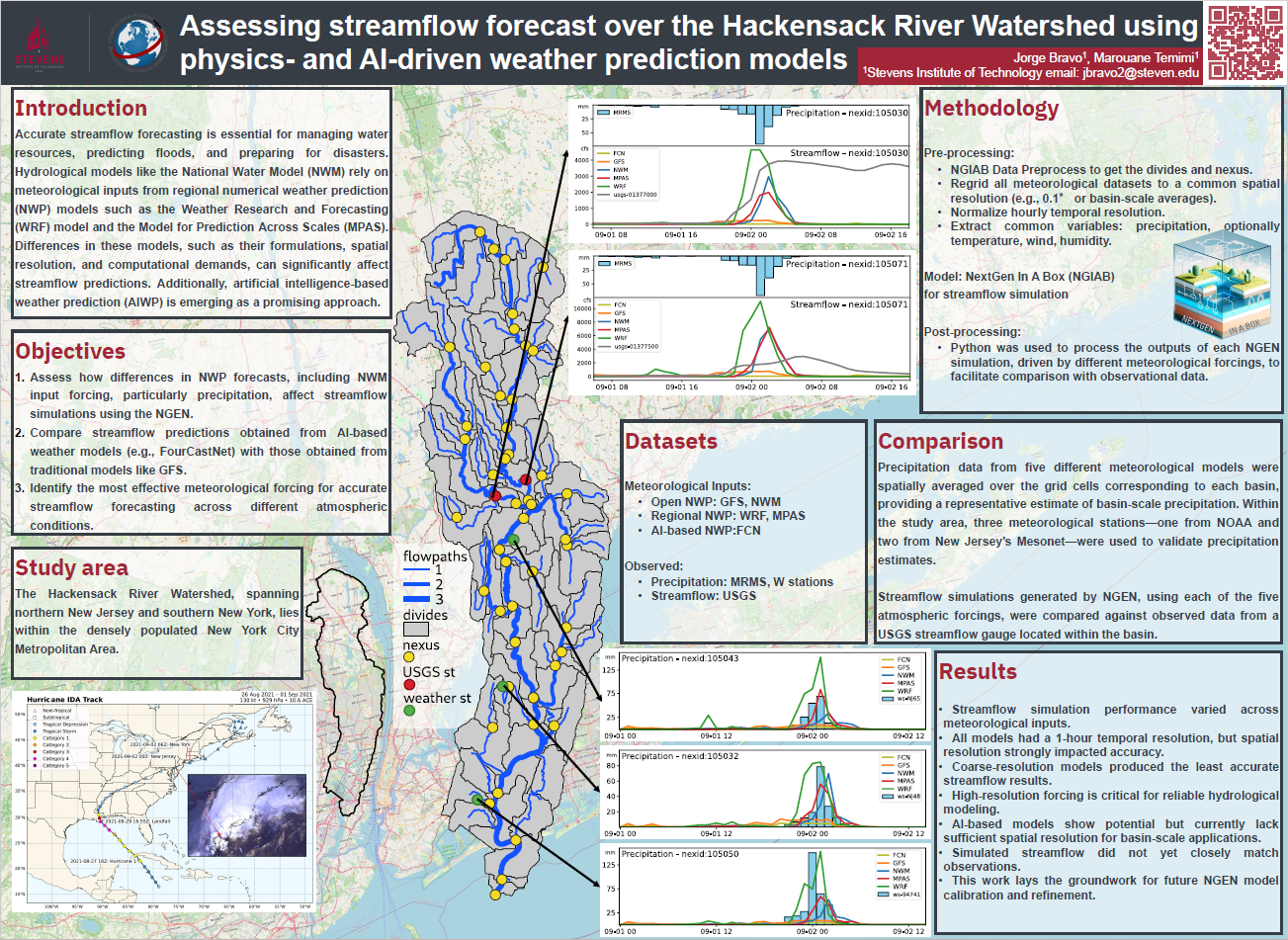Assessing Streamflow Forecast Over the Hackensack River Watershed Using NGIAB

A poster presented by the I-SMART team at the CIROH Developers Conference, held at the University of Vermont in Burlington from May 28 to 30, 2025.
The densely populated Hackensack River watershed lies within the New York City Metropolitan Area, which spans northern New Jersey and southern New York. Accurate streamflow forecasting within this region is therefore essential to enable effective water resource management, flood prediction, and disaster preparedness.
Precipitation data is critical for effective hydrological modeling, making the identification of reliable data sources a key priority. This is why the Integrated Spatial Modeling and Remote Sensing Technologies Laboratory (I-SMART), an interdisciplinary research unit within the Davidson Laboratory at Stevens Institute of Technology in Hoboken, New Jersey, uses the latest developments in both atmospheric and hydrological modeling to address flood risks in the Hackensack Watershed with solutions that could be expanded to the entire New York City Metropolitan Area.
In the past, this work has included key early applications of the Next Generation Water Resources Modeling Framework (NextGen). Notably, the I-SMART group was among the first to force the NextGen framework with multiple atmospheric models for comparative analysis during a real-world event: the passage of Superstorm Ida over the New York metropolitan area in September 2021. The recent advent of NextGen In a Box (NGIAB) has provided an opportunity to accelerate these applications even further by taking full advantage of NGIAB's containerized, user-friendly, and easily deployed environment.
Recently, the I-SMART team has been testing various regional atmospheric models grounded in physical equations, including traditional models like WRF and next-generation atmospheric models such as MPAS. Additionally, given the increasing popularity and adoption of AI/ML-based approaches, the team has also begun exploring their potential. The goal of this work is to assess the performance of these approaches in the Hackensack Watershed, along with investigating the sensitivity of the model to various meteorological forcings, including forcings based on the National Water Model. (The initial and/or boundary conditions for all the models were determined using the Global Forecast System.)
This investigation required handling a large volume of precipitation data from various models, each with different spatial resolutions and in some cases, such as MPAS, using unstructured grids. As such, one of the key challenges was finding a hydrological modeling framework flexible enough to accommodate such diversity. This made the NextGen framework a natural choice, allowing them to integrate precipitation forcings from various sources with the appropriate pre-processing to align them with the model requirements in terms of spatial and temporal scales.
The complex implementation and execution of these models was faciliated by NextGen In A Box (NGIAB), which successfully enabled the integration of diverse precipitation sources. By simplifying local deployment and providing full control over model inputs, configurations, and runtime operations, NGIAB has given the I-SMART team the tools to conduct their groundbreaking research with even greater efficiency.

